Elderly's feeding and nutrition
Unidad de Apoyo para el Aprendizaje
Proyecto PAPIME Clave: PE308817
StartDuring the old age process many unavoidable changes arrives on physical structure, like the loss of muscle mass joined to an increased abdominal and pelvic accumulation of lipoid tissue that replaces it. When the accumulation exceeds normal values and it’s no more a simple beak on weight it’s considered overweight or an obese syndrome (obesity).
In Mexico, the obesity has increased on dwellers till 59 years old; nonetheless on ages of 60, 70 and +80 years this increment trend to diminish on men and women.
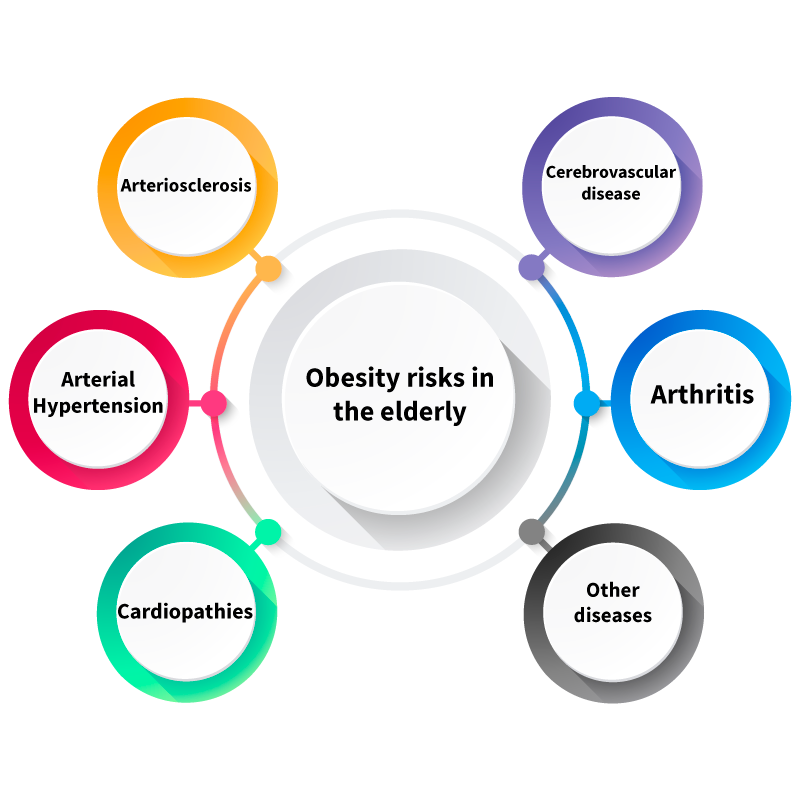

(n. a.) (2018). Elder man watching sunset.[photograph]. Retrieved from: https://pixabay.com/en/sunset-tree-silhouette-dusk-lonely-3156176/
Obesity affects physical and psychological dimensions of the person, decrease their functionality, lower the self-esteem and self-concept, and also influence adversely on the sociocultural dimension and social life of the person. That’s a motive for nurses to attend and identify the signals so as to diagnose a “Nutritional Imbalance: Overweight.” To correctly guide elder people to improve their feeding and nutrition.
Malnutrition is another of the most frequently health troubles present on aging while the balance between feeding and nutritional requirements gets lost. As a result, some symptoms appear some symptoms like the reduction of lean body mass with functional disturbances of muscular system, decrease bone density, dysfunction of immune system and other affectations. (CENETEC, 2014)
On older people, malnutrition causes:
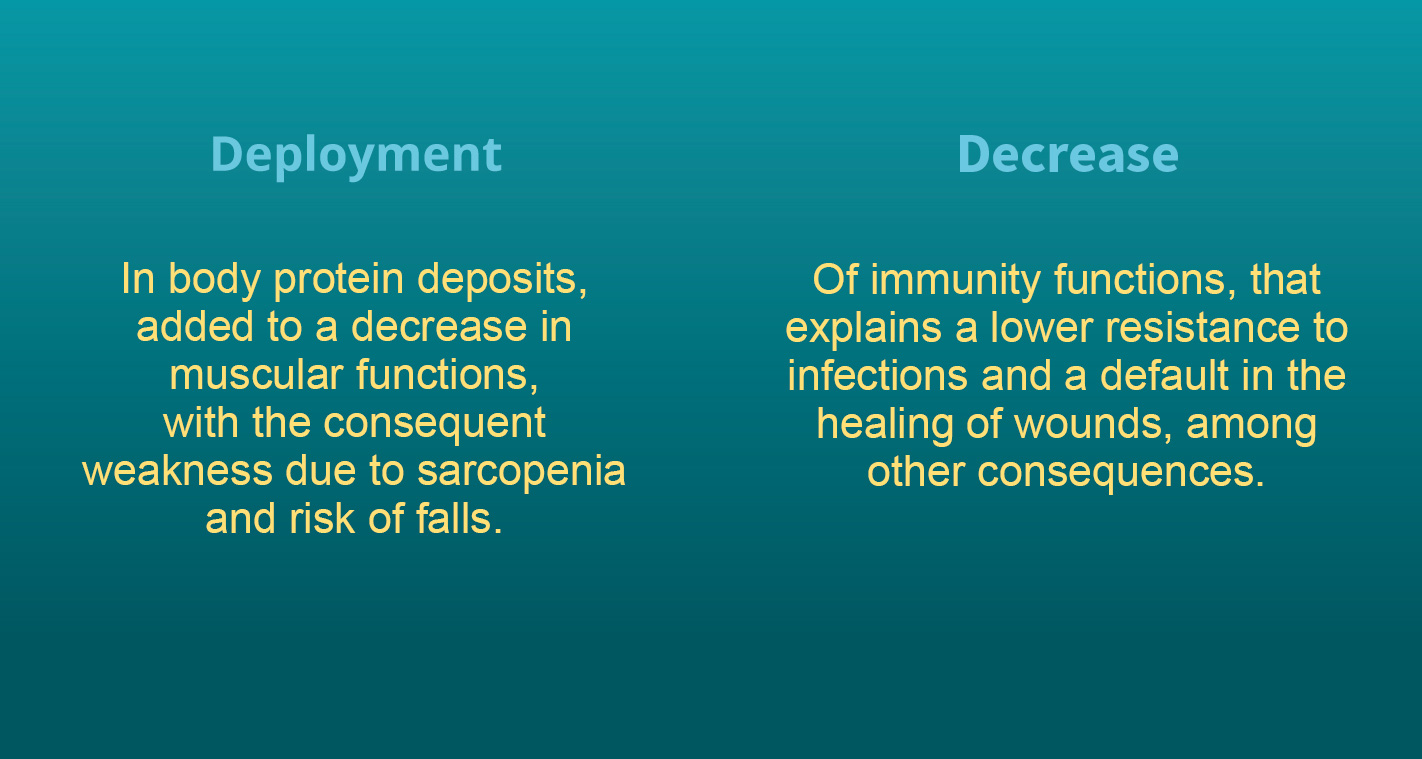
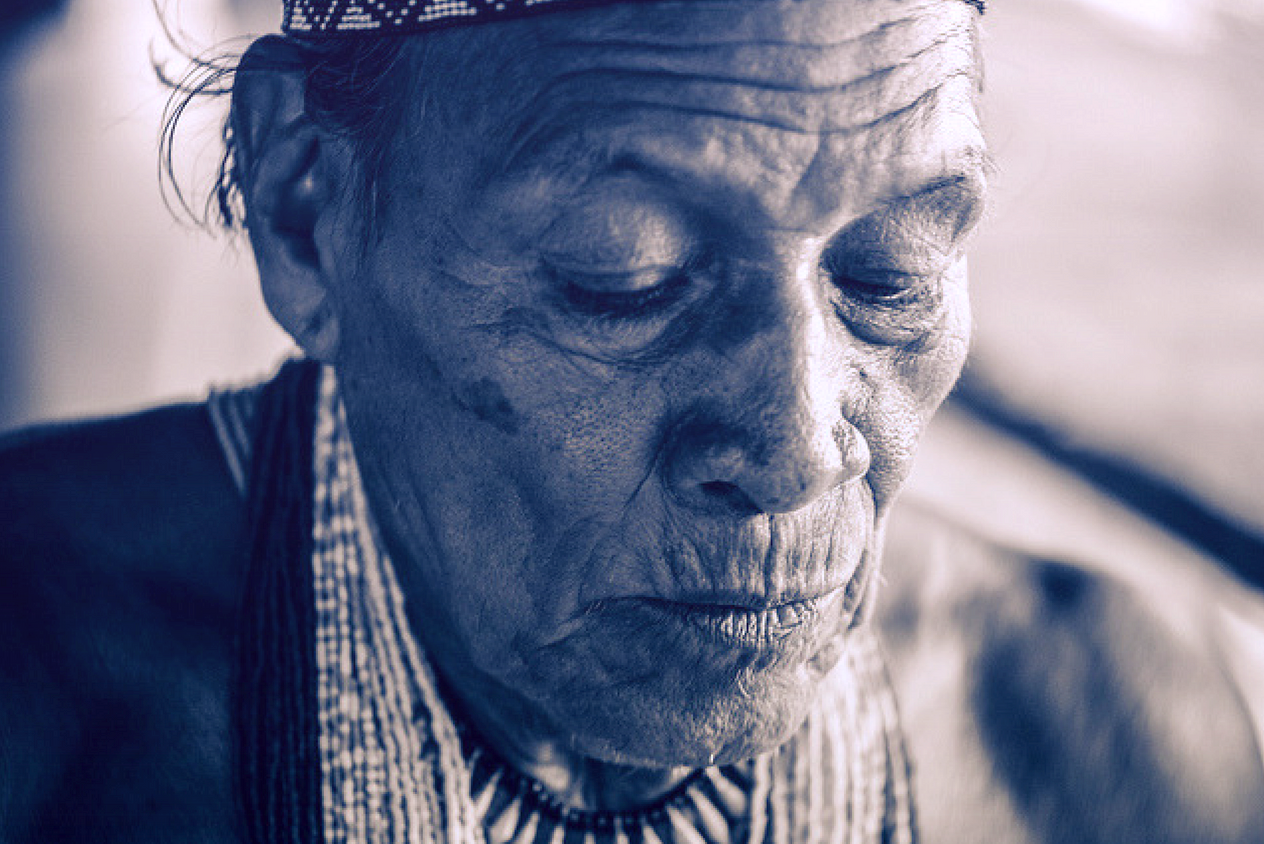
Proimos, Alex. 2012. Embera Village Elder [photography]. Recovery, april, 2018 from: https://www.flickr.com/photos/proimos/8259618176/in/photolist-dzSGHW-oiyFN-8ECuLN-2J5RzQ-q2rMND-dxZMTR-dq3WN-oiyDS-k2EUWT-bzYkgq-aj35J-8MQcxh-2KWMnf-p4pfu2-8EzGVr-fn517s-rgqQZe-4u6BFv-6BrX4d-23CfX1u-2J1zhg-6uJtsr-5o7Mp4-keec5z-oiyDm-dzAFYs-2FL1u5-V7myqG-ax1pXx-mYkEBP-rjLPkE-cmJqp1-2G1SdV-m9p5B-2G1Lfr-V16E7d-3Tt7PY-V4GXTx-23v1W1f-eNZLyX-qChqz2-TsiDMP-9EUxHb-2KXenU-2KSyUR-iQXwbv-aVT63K-UYqkaD-2G66BE-21goZTP
In Mexico, the prevalence of malnutrition in the old age ranges from 4% to 10% in those who live at home. Protein and protein-energy malnutrition are the two main forms of nutritional deficiencies..
According to Herdman and Kamitsuru (2015), the nursing team uses the diagnosis to declare or make judgments of the problems identified and synthesized at the assessment stage, and to be able to plan and execute nursing interventions that reduce, eliminate or prevent alterations of health that belong to the legal and educational domain of nursing.
In order to determine the presence of a nursing diagnosis, a complete and exhaustive assessment of the habits of the elderly is carried out, in relation to the food and nutrition that constitute the related factors. Among the most common diagnoses in this need, you can find two: "Nutritional imbalance: lower than the body needs" and "Nutritional imbalance: overweight" presented below:
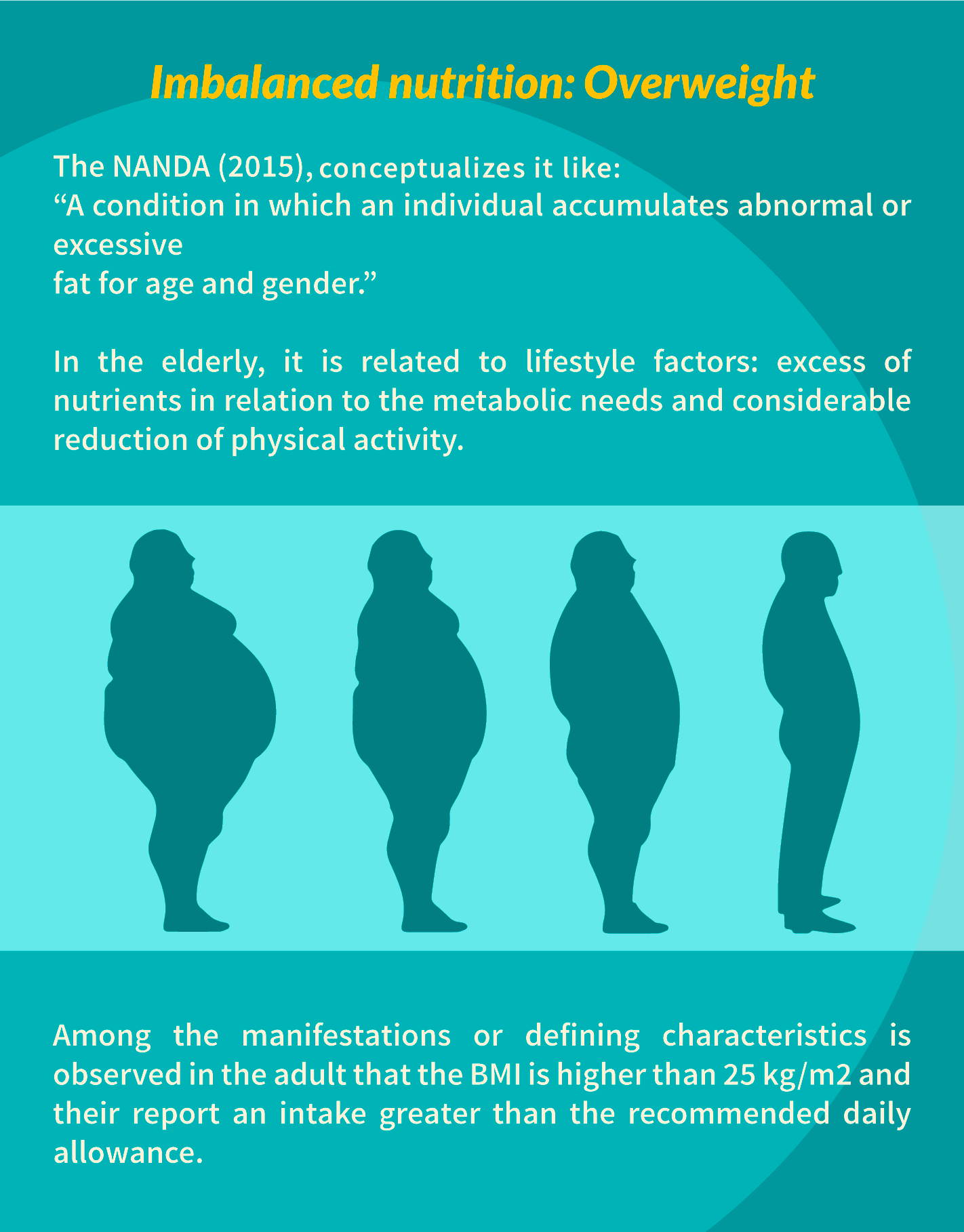
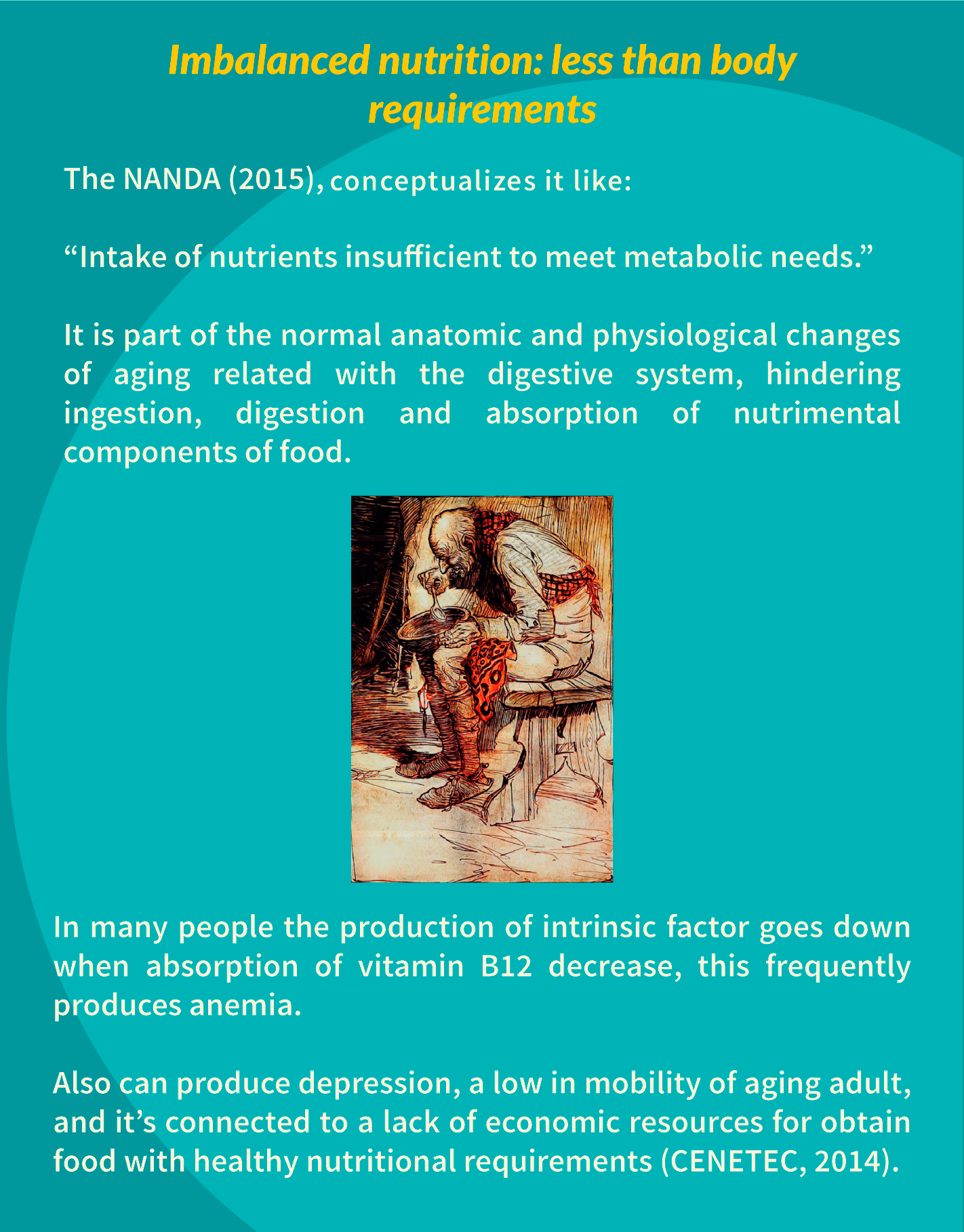
Within the defining characteristics of the diagnosis, below the body needs: it is observed a body weight below the ideal, the lack of interest in taking food, low muscle tone, alteration of the sense of taste, food intake reports lower daily amounts than the recommended, immediate satiety after starting to eat food and weakness of the muscles for chewing or swallowing.
Elder people (EP) at home requires a multidimensional assessing that involves an interview and holistic, systematic and continuous physical examination by the nursing professional, focusing on the related factors, as well as the manifestations of dependence in the satisfaction of the need for food and nutrition.
Click on each arrow or bullet to navigate between the different valuations and display their corresponding description.
The anatomo-physiological changes that occur with the aging process and the presence of chronic degenerative diseases, together with the beliefs and values related to the act of eating, cause in the stage of old age, to require the consumption of food with certain characteristics to satisfy the nutritional requirements according to the presence of diseases and physical activity.
Therefore, at this stage of life, it is important that the nurse teaches both, the old person and their family, as it is with them that they live and consume their food. During nursing care, it is important to identify the information that should be provided to the family and to the elder itself, for proper nutrition and feeding.
Click on the arrows to view the information about nursing care necessary for the person and their family member.
Since the stomach presents delayed gastric emptying befall and its gastric capacity decreases, meals should not be plentiful; so it is essential to educate the elderly about the importance of the three full meals intake during the day and two snacks, emphasizing that the last meal should not be plentiful or too late. Physiologically, these changes predispose this age group to become fragile, due to the deficit in the consumption of calories and nutrients. (CENETEC, 2014)

(2018). Fresh market [photograph]. Retrieved from: https://pixabay.com/es/el-mercado-fresco-abarrotes-3147758/
The possibility of providing an adequate nursing intervention is increased if the diagnosis of the elderly is based on the related factors and on the manifestations of the health problem in order to make pertinent judgments.
The elders suffer from changes in his digestive system due to the normal aging process. However, some of these changes can be manifestations of important health problems to differentiate so as to provide adequate nursing care.
Information sources
Bibliography
Herdman, T. H. y Kamitsuru, S. (2015). Diagnósticos enfermeros. Definiciones y clasificación 2015-2017. Barcelona: Elsevier.
Reyes, A. V. (2017). Atención de enfermería para el cuidado del adulto mayor en el hogar. México: ENEO-UNAM.
Electronic documents
Centro Nacional de Excelencia Tecnológica en Salud (Cenetec). (2014). Guía de práctica clínica. Evaluación y seguimiento nutricional del adulto mayor en el primer nivel de atención. Ciudad de México: Autor. Retrieved on may 17 of 2017 from: http://www.cenetec.salud.gob.mx/descargas/gpc/CatalogoMaestro/095_GPC_Evaycontrolnutic_eneladultomayor/NUTRICION_AM_RR_CENETEC.pdf
How to quote
Reyes, V. & Tapia, B. (2018). Elderly's feeding and nutrition. Unidades de Apoyo para el Aprendizaje. CUAED/ENEO-UNAM. Retrieved on (date) from (link)